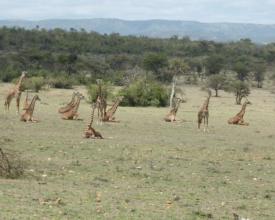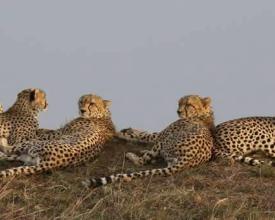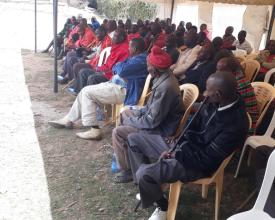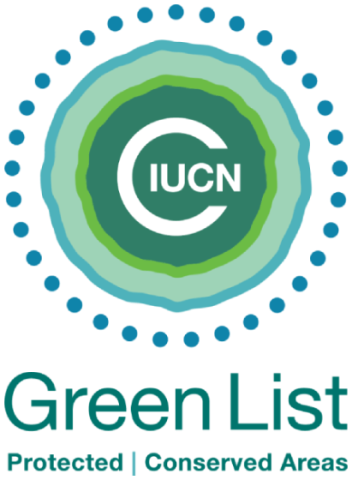
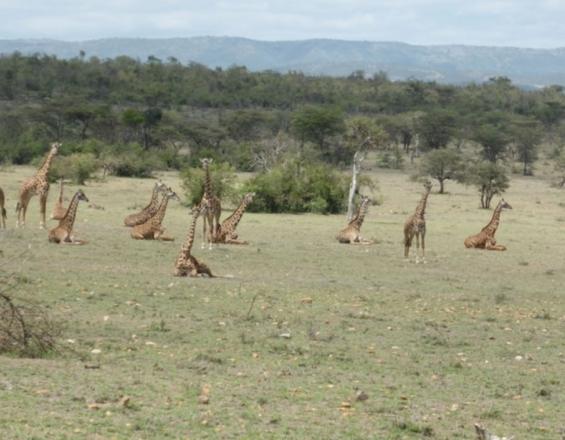
In late 1970’s, Kenya started witnessing rapid degradation of the community lands bordering the national parks and reserves. Besides threat to wildlife, this degradation was also a threat to community livelihoods as it led to more poverty and ecological marginalisation. The founding of Ol Kinyei Conservancy was motivated by desire to stem this degradation and the need to conserve wildlife and habitats by partnering with the communities living on those lands and provide them with real and sustainable benefits from wildlife and wilderness areas. This was the founding principle of Porini model, of protecting indigenous resources to generate income. In this model, you have a low-density ecotourism venture/s whose income goes towards the community as incentive to preserve ecosystem health. It is now widely accepted as a conservation solution beneficial to people and environment and is being used in several other places around Maasai Mara and rest of Kenya.
Context
Challenges addressed
The solution addresses challenges of environmental degradation which leads to destruction of habitats and loss of biodiversity manifested by massive decline in wildlife populations. This is especially so for large faunal species that require wide ranging areas. The social challenges include lack of benefits from community lands bordering protected areas and the associated poverty caused by frequent human wildlife conflict as both people and animals compete for scarce resources.
This causes the land owners to subdivide and fence their lands making them economically unviable and also unsuitable for conservation which is a loss to both communities, wildlife and environment. The main economic challenge is poverty as formal conservation models do not allow communities to earn direct income from wildlife and national parks which are property of the national and local governments, yet the lands bordering national parks are naturally better suited for wildlife than agriculture.
Location
Process
Summary of the process
- Identify critical wildlife dispersal areas being degraded by fencing, unsustainable farming and other impacts. This is done by stakeholders and researchers
- Engage land owners to select and lease land for a conservancy at an annually appreciating rent per acre. This is done by private sector investors and communities
- Enter in lease partnerships with land owners and liaise with relevant government departments to ensure the leases are legal and registered. This is done by communities and investors
- Collect data on land use changes and cultural dynamics to guide development of lease terms and conditions. This is done by researchers
- Implement monitoring and study projects to establish the ecosystem changes in terms of habitat recovery and buildup in populations and movement patterns of wildlife. This is done by researchers in collaboration with conservancy management
- Use lease guarantees to set up ecotourism projects that generate income to offset the cost of conservancy lease and running costs. This is the bottom line that ensures success of the model as it supports all the other activities. This is done by private sector investors
Building Blocks
Community Partnerships
The communities are at the heart of the solution. They own the land and have the property rights on the land. The challenge is that the land in individual parcels is not economically productive in the rangelands bordering national parks. When communities join their individual parcels of land and form a large conservancy unit, it becomes ecologically viable for conservation and can support large populations of wildlife and their habitat requirements. These wildlife populations can then support tourism activities by attracting visitors on safari and nature expeditions at a premium fee since its more exclusive than the typical national parks. This in turn generates revenue that can pay the landowners the cost of not using their land, while creating other livelihood opportunities like employment and support with other community projects like education. The primary objective is to endear the communities to the concept and get them to accept that collectively they stand to earn more long term benefits by not fencing or developing their individual lands and instead forsaking it as a wildlife habitat together with the other parcels of other community members
Enabling factors
There must be goodwill and trust between the community and their leadership on one hand and the community and the proponents of the conservancy on the other. The legal framework must be able to support lease arrangements that guarantee the land owners that there is a legal recourse should there be any dispute.
Lesson learned
Indigenous communities have regard for wildlife and would take initiative for their conservation as long as there is tangible benefit. The people also support genuine investments based on natural resources that support conservation and give solutions to poverty and environmental degradation.
National laws that support registration of titles and leases are important as they decentralise decision making from the national governments to individual land owners who can freely get into negotiations with the conservancies. This makes it easy to make decisions and empowers the communities to make decisions that affect them
Stakeholder Collaboration
Natural Resources management and community mobilization requires an interplay of stakeholders who are very critical to success of community conservancy model. There are those involved in advocacy and community education and their input is very important in creating awareness and facilitating information exchange. This makes it possible for community to develop trust and appreciate their contribution to environmental conservation and ultimately to economic development. The NGOs play an important role in information sharing data and drumming up for international support in research and education. Other important collaborators include the local and national governments which develop framework of collaboration with communities and set guidelines on administration and management of wildlife in areas outside the conventional national parks and reserves. The government land office is very crucial as all land adjudication matters are vested in them and they set guide lines for leases and laws that govern them. Most important all sectors of the community, including youth and women, must be involved in conservancy management and benefits sharing to ensure they mainstreamed in conservation and guarantee sustainability of the initiative
Enabling factors
There is need for shared vision among the stakeholders who are motivated by overriding desire to conserve the environment, including the large mammals mostly affected by habitat degradation. The communities must have a unity of purpose based on shared desire for better livelihoods and regard for wildlife. The conservancy requires continuous engagement with the communities so that they can appreciate their contribution individually and collectively
Lesson learned
Resource management and community issues are complex and cooperation of all stakeholders is important. Communities are very sensitive to patronising approach to issues affecting them and need to be engaged with great patience and finesse. One important approach is to use community leaders and sensitize them and then enable them to discuss the issues with fellow community members and address their fears, hopes and ambitions. Different stakeholders have different approaches and viewpoints and there is always need to have a core team that takes divergent views and tries to harmonise them with key objectives.
Finally government is cardinal stakeholder and success of conservation efforts largely depend on goodwill and support from national governments. Clearly spelt out goals makes it easy to win support when the government appreciates contribution of private sector and the communities in solving environmental problems and availing more land for conservation
Science and Research
Research collects data on environment, history, land use patterns and government policy. This makes it possible to have a basis for making decisions and for engaging the communities, the private sector and the government. The researchers in our case were able to map out movement corridors for animals like elephants and migration routes and seasons of other animals like the wildebeest. This is a useful guideline in establishment of conservancy boundaries and for engaging the policy makes and communities. Research provides useful information for publicity campaign locally and internationally making it easy to win support from stakeholders.
Research is also useful in laying projections and carrying out monitoring to show the trends of positive and negative change. We have had very useful research data showing dramatic recovery of hitherto declining populations of some endangered animal species like the large cats. There is also socio-economic data that shows the growing income trends and better livelihood outcomes in the communities that surround the conservancy as a result of positive impacts of the conservancy
Enabling factors
There has to be national concern that attracts research interest from reputable firms, institutions and individuals. The researchers need support and facilitation to carry out research work among the people and also in the environment. The stakeholders involved must be receptive to scientific information and must demonstrate interest in utilizing the findings to make better decisions for the people and the country
Lesson learned
Research issues must have genuine theoretical questions to answer in order for them to be of interest to science. Its only then they can attract he necessary support and accreditation to learning institutions that makes their methodology academically acceptable and their results credible enough to be used as a basis for decision making and planning. For instance, it was important in Maasai Mara to show evidence of wildlife decline in as much as it was to answer the question as to why it was happening. It was also important to understand trends in land use in the greater region and to link it to decreasing wildlife habitats due to land subdivision and upsurge of other land use activities like agriculture and real estate development.
Its also very important to involve indigenous communities in design of research programs and objectives and to make use of their historical, cultural and anecdotal knowledge.
Private Sector and Business Leadership
The success of the model is primarily anchored on its business principle, conceived and driven by private sector leadership ethics and character. Community and government policies and processes are encumbered by too much bureaucracy and lethargy and can hardly drive such a complicated process forward. Whereas private sector leadership means that people with business instinct and ambition can see the opportunity of generating income from land by creating a win win arrangement where land supports wildlife which supports tourism which generates income. Since paying of rental fees is a huge overhead for the conservancy, the private sector players spearheading the project must be able to source for markets and people who are willing to pay to experience community wildlife sanctuaries that benefit local people and also wildlife. The people from the private sector who develop and implement the conservancy model must be imbued with high business integrity so that they can engage in legal and honest partnerships with communities and nurture a long-term and profitable relationships. This will enable habitats and ecosystems to flourish and marketing policies to bear fruit over time as both require long term planning, patience and great sacrifices by both parties.
Enabling factors
There is need for safe and stable business environment because the undertaking is long term and hence need for long term stability and predictable policies. There is also need for favourable investment policies that encourage market driven private sector investments and partnerships with local people and on land. This model lays heavy emphasis on business inspired conservation where wildlife must directly benefit the people as an incentive to set their land for conservation
Lesson learned
Conservation of natural resources and wildlife is constrained by shortage of land because the areas set aside for wildlife by national governments are too small. The participation of communities bordering national parks comes in handy by using their private land as part of conservation. However, this only works when the people derive direct benefit from this wildlife. Private sector participation that identifies business opportunities to bridge the income gap is paramount and can be used in many other parts and circumstances where private sector investors get into profitable partnerships with communities. The private sector spearheads the investment and marketing while the communities serve as custodians of the land and natural resources in exchange for income so generated. For this to succeed, the less the bureaucracy the better and the arrangement should be guided purely by mutual business partnership between the people and the private sector leaders in collaboration with other stakeholders including government institutions and departments.
Impacts
The cardinal appeal of this solution is that it is not dependent on donor funding but rather on a self-propelling and mutually beneficial partnership between a private tourism activity and the community who voluntarily set aside a portion of their land for a wildlife conservancy that benefits them. The conservancy allows rehabilitation of land that was previously degraded and creates room for regeneration of wildlife populations including large mammals, which are highly endangered in most of their ranges. The buildup of wildlife in areas outside government national parks supports national efforts to conserve wildlife without putting any land use and economic pressure on the national government because of its sustainability. The communities earn guaranteed income from lease, without subjecting their land to subdivision, fragmentation, fencing and varying land uses including cultivation and de-forestation which would be inimical to conservation. Besides direct income from lease, the land owners benefit from direct and indirect employment that is generated from the ecotourism and conservancy management activities. The model also gives opportunity for educated people from the communities to spearhead environmental education and start community programs that will endear the conservancy to the people and further widen positive impacts of conservation
Beneficiaries
The communities are primary beneficiaries as they get direct and guaranteed income. The government gets less pressure to provide land for conservation and income to people. The wildlife and ecosystem also get a boost through increased space
Sustainable Development Goals
Story
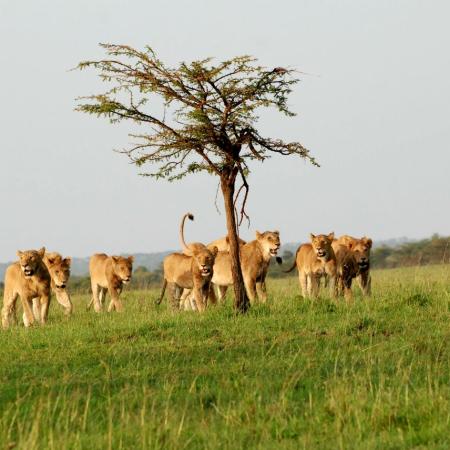
In December 2016, the Chairman of Gamewatchers Safaris and founder of Ol Kinyei Conservancy, Jake Grieves-Cook received the following update from the lead researcher at the Mara Lion Project:
"Something that I am very keen to highlight is the fact that we have found there to be a higher lion density in all conservancies combined as compared to the National Reserve. I find this quite remarkable given that (in ecological terms) the conservancies are relatively new. Naboisho, Ol Kinyei and OMC are all critical lion areas. OMC has the highest density of any of the protected areas, which is largely a product of the river density and favorable habitats. Ol Kinyei has the second highest density of lions of any protected area and is also a real "hotspot" of lions. While Naboisho has a lower density of lions, it still has very good lion numbers. I assume that many tourists still think of the Maasai Mara Reserve first when considering their holiday, but papers such as this will surely help in opening their eyes to the spectacular wildlife of the conservancies. I fully appreciate the huge undertaking of all those involved in the conservancies and hope this provides some positive news, the lions certainly flourish within them"
This was immensely inspiring, that Ol Kinyei is now said to be among the areas with highest densities of lion in Kenya, whereas their population is in decline in most other parts of Africa.
This shows how important habitat is for large mammals and is sure evidence of the importance of the conservancy model and how it is saving land for animals while generating income for communities.
The underlying message here is that urbanisation and changing land use happening in many places across Kenya, and resulting in loss of habitat for wildlife and a big decrease in numbers of wild animals can be profitably controlled. Instead of former rangeland becoming heavily settled or fenced and taken over by unviable farming, setting aside land as Conservancies is one way to provide more wildlife habitat and to give wild animals a space where they can live, using income from tourism to pay for conservation. Wildlife numbers have actually increased significantly in the conservancies which have developed in areas such as around Amboseli, the Mara and in Laikipia and they are providing a safe haven for many species, especially for the big cats, elephants and rhinos. Quite inspiring, for nature and people

